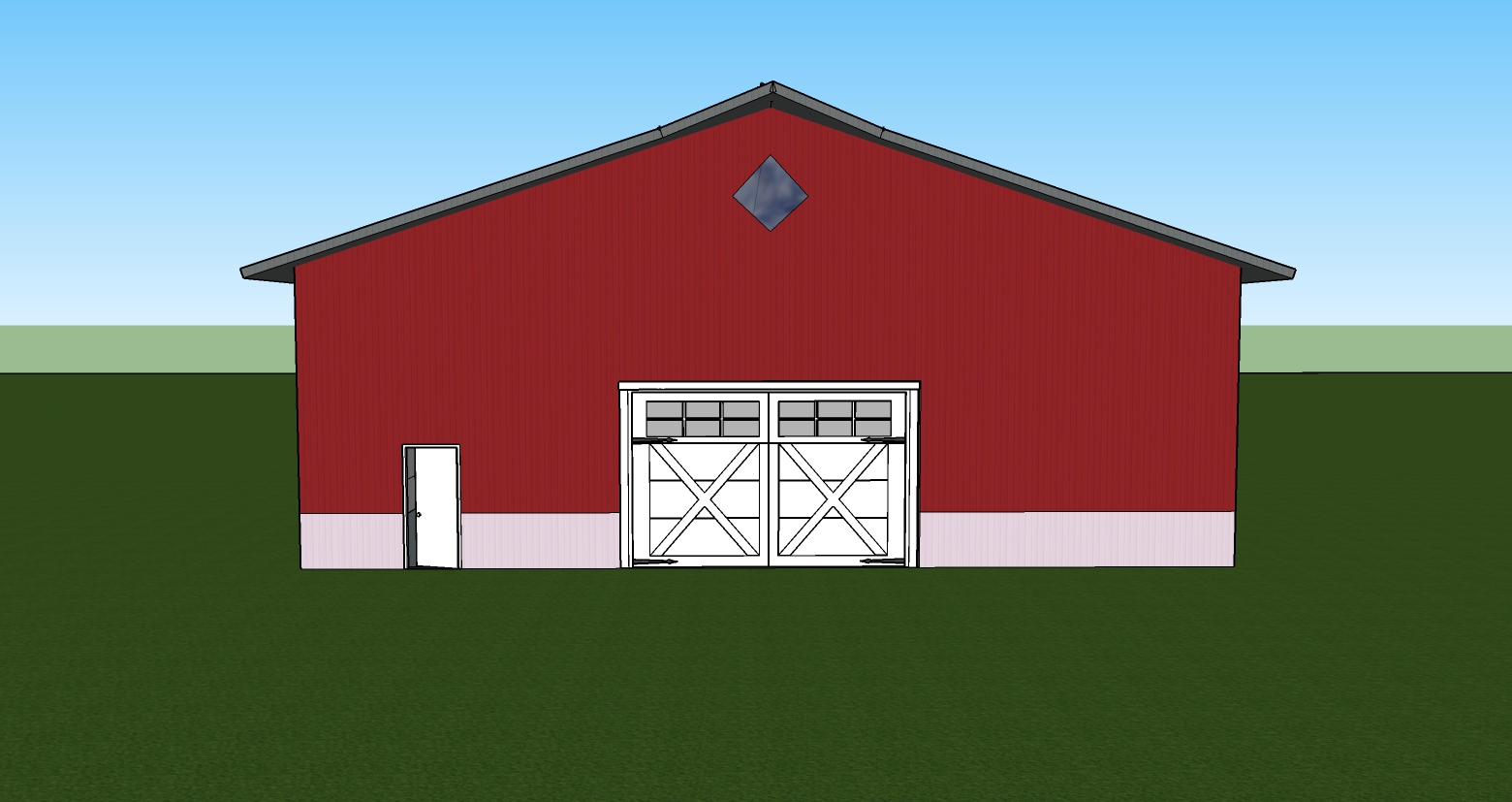
Alright, let's talk pole barns! They're super versatile, perfect for housing your livestock and storing your gear, and they're built to last. But before you start digging holes and ordering lumber, let's get a plan in place. This is going to be your home away from home for your animals and equipment, so we want to make sure it's set up just right.
Let's start with the basics:
What are you storing? Are you housing horses, cattle, sheep, or something else? How many animals are you planning on keeping? This will dictate the size of your barn, as well as the features you'll need inside.
What equipment do you need to store? Think about tractors, trailers, hay balers, and any other equipment you use regularly. Will you need space for a workshop or a mechanic's area?
What's your budget? Pole barns are known for being cost-effective, but it's still important to set a budget so you know what you can afford. Don't forget to factor in the cost of materials, labor, and permits.
What's the climate like in your area? You'll want to consider factors like snow load, wind speed, and temperature extremes when designing your barn.
Okay, now that we've got the basics covered, let's get into the fun stuff!
Choosing the Right Size
First things first, you need to figure out the dimensions of your barn. It's better to err on the side of bigger than smaller, especially if you think you might want to expand your operation in the future.
Here's a quick guide to get you started:
Horses: Plan on at least 12 feet of space per horse. If you're housing multiple horses, consider creating separate stalls for each.
Cattle: Cattle need about 30 square feet of space per animal. You'll also need extra room for feed and water storage.
Sheep: Sheep are relatively small, but you'll still want to give them enough space to move around comfortably. Plan on at least 10 square feet per sheep.
Next, you need to think about the layout of your barn:
Stalls: If you're housing horses or cattle, you'll need to plan for stalls. Make sure they're big enough for the animals to move around comfortably.
Feed and water: You'll need a place to store feed and water for your animals. Consider adding a hay rack, a grain bin, and automatic waterers.
Equipment storage: You'll need to have designated areas for storing tractors, trailers, and other equipment. Make sure there's enough room to move around and get your equipment in and out easily.
Let's Talk About Materials
Posts: The backbone of your pole barn is going to be the poles. These can be made of wood, steel, or concrete. Wood poles are typically the most affordable option, but they require more maintenance. Steel poles are strong and durable, while concrete poles are the most long-lasting.
Roofing: You'll want a strong roof that can withstand the weather in your area. Metal roofing is a popular choice because it's durable, easy to install, and relatively inexpensive.
Siding: Siding can be made of wood, metal, or vinyl. Again, choose the material that best suits your needs and your budget.
Important Features to Consider
Ventilation: You'll need to make sure your barn is well-ventilated to keep your animals comfortable and to prevent the build-up of moisture. Consider adding vents to the roof and sides of the barn.
Lighting: Adequate lighting is essential for working in the barn and for ensuring the safety of your animals. Use LED lights for energy efficiency and long life.
Insulation: Insulation can help to keep your barn comfortable year-round. Consider insulating the walls and roof, especially if you live in an area with extreme temperatures.
Doors: You'll need doors for accessing the barn and for bringing in and out your equipment. Make sure the doors are big enough for your largest pieces of equipment.
Don't forget about the little things:
Concrete floor: A concrete floor is essential for keeping the barn clean and for providing a solid base for your animals and equipment.
Gutters and downspouts: Gutters and downspouts will help to direct rainwater away from the barn, preventing damage.
Fire extinguisher: A fire extinguisher is essential for safety, especially if you're storing hay or other flammable materials.
Ready to Get Started?
Building a pole barn is a big project, but it's also a rewarding one. With some careful planning and the right resources, you can create a durable and functional building that will serve you and your livestock for years to come.
Here are a few extra tips to keep in mind:
Get professional help: If you're not comfortable building a barn yourself, hire a professional contractor. They can help you with the design, construction, and permitting process.
Don't cut corners: Using quality materials and construction techniques will ensure your barn lasts for many years.
Start small and expand later: If you're just starting out, you might not need a huge barn. Start with a smaller building and expand as your operation grows.
Remember, a well-designed pole barn is an investment in your farm or ranch. By taking the time to plan carefully and choose the right materials, you can create a building that will serve you well for years to come.
And hey, if you have any questions, don't hesitate to ask! We're here to help.







No comments:
Post a Comment